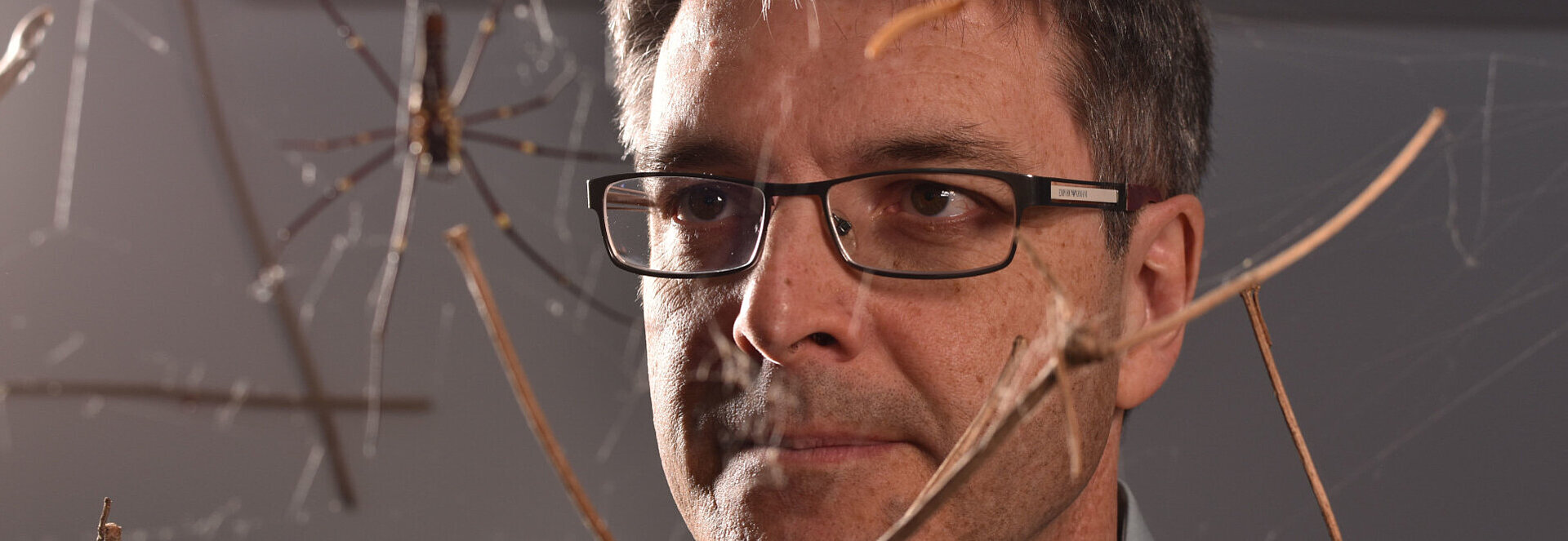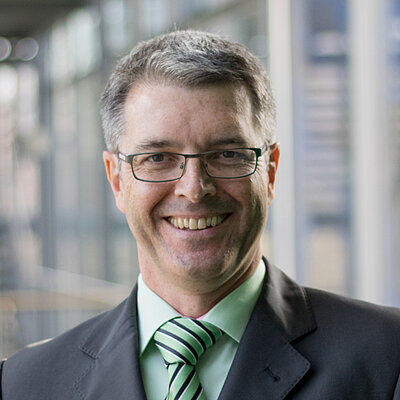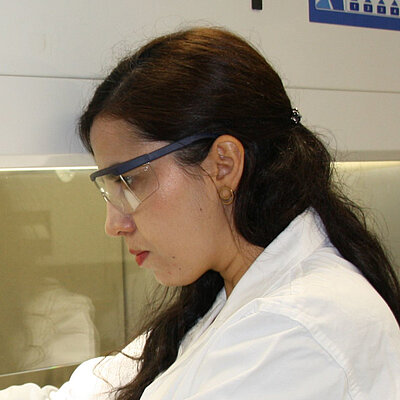Fascination Biofabrication
Biofabrication is a cutting-edge technology: living cells and materials are the building blocks of tissues that promise advancements in the development of efficient yet gentle biomedical therapies. The Department of Biomaterials at the University of Bayreuth is pioneering in this field.
Led by Prof. Dr. Thomas Scheibel, multiple research groups work on innovative research projects with the aim of producing new functional tissue scaffolds through a combination of natural growth processes and technical systems, such as biotechnological production of biopolymers and synthesis of biocompatible polymer systems. This involves the targeted regeneration of defective tissue in tendons, nerves, blood vessels, or organs such as the heart. The biofabrication research taking place on the Bayreuth campus is thoroughly interdisciplinary: it combines competencies from the material sciences, biotechnology, polymer chemistry, cell biology, and engineering sciences.
Bioinks Allow for Finest Framework Structures
Automated 3D printing processes are used to process polymers, which must be optimally adapted to their intended functions from both a medical and technical point of view—a challenge being addressed by a research group led by junior professor Gregor Lang, among others. One example of biopolymers is fiber-forming structural proteins, such as those of the silk of insects and spiders. Several years ago, the team led by Prof. Dr. Thomas Scheibel succeeded for the first time in the biotechnological production of spider-silk proteins.


The materials produced from these proteins are particularly promising for biomedicine because they are not cytotoxic, are slowly degraded in the body and replaced by the body’s own material, and do not trigger immune responses. As the Bayreuth researchers were able to show, bioinks based on spider-silk hydrogels are superior to many other 3D printing materials. The bioink, in which spider-silk proteins and living cells are mixed, “flows” in the printhead of the printer but solidifies on a printed surface in just a few seconds, so that even the finest framework structures can be produced without additives.
In close cooperation with scientists from the University of Erlangen, the potential of such bioinks has already been demonstrated—for example, in the regeneration of heart muscle tissue. Prof. Scheibel is optimistic: “It will probably be possible to produce functioning heart muscle tissue in the laboratory in a few years. The question is when and how this can be transferred to clinical application.”
Stimulating Natural Growth and Healing Processes
The Bayreuth working groups in the field of biofabrication offer postdocs and doctoral students, as well as dedicated master’s students within the English-language study program “Biofabrication,” a wide range of opportunities to develop their own research ideas and to test them in interdisciplinary collaboration.
Dr. Sahar Salehi, who is completing her habilitation at the University of Bayreuth, concentrates on biofabrication and the cultivation of muscle and bone tissue. She does not work with spider-silk material, but with specific polysaccharides and proteins. Using 3D printing, she produces biocompatible fits (“matrices”) in which natural tissue can spread and, most importantly, align to produce precisely defined structures. In this way, bone material can be formed while the matrices are slowly degraded in a natural way. Dr. Saheli is fascinated to see how we in Bayreuth can stimulate natural growth and healing processes through modern high-tech methods and even surpass them in quality. She has also had the opportunity to establish her own research group, and she encourages all her team members to develop and test their own research ideas in the field of biofabrication.
4D-Printing as a Basis for Intelligent Self-Organization
Sometimes 3D printing is not enough: a research group led by Prof. Dr. Leonid Ionov is working on the production of fine-structured blood vessels with the aid of 4D printing—a method that, in addition to the three spatial dimensions, includes time as a fourth dimension. Thin layers of “smart polymers” play a key role in this process. These layers are structured in such a way that the polymers produce blood vessels of various sizes and shapes through “intelligent” spatial self-organization. The Bayreuth team therefore describes its work as “micro-origami”—alluding to the Japanese art of producing a wide variety of figures and patterns solely through paper folds defined in a temporal sequence.


Recently, Prof. Ionov’s research group demonstrated the potential of a 4D biofabrication approach for engineering muscle tissue and for regenerating damaged neurons. Current research activities include the exploration of possibilities for applying 4D printing technology in engineering bone tissues and blood vessels. Moreover, within the scope of recently funded DFG projects, the group has started to develop 3D and 4D printable sensors for point-of-care and orientational sensors for augmented reality applications.
Dr. Arpan Biswas, a Postdoc reseaching on 3D printing of shape-memory polymers, finds working in the team “a great experience,” thanks to the helpful and collaborative nature of the group and the freedom to explore the science. He adds that “the University of Bayreuth is very well equipped with cutting-edge research instruments and very green in nature, and the Welcome Services for international scholars are very helpful in all regards.”
Combining High-Resolution Microscopy Techniques
The Bavarian Polymer Institute (BPI) KeyLab “Adaptive Biomanufacturing” has also been set up on the Bayreuth campus. As part of the institute’s research, rapid prototyping processes are used to produce tissue frameworks with integrated living cells. A novel combination of high-resolution microscopy techniques for analyzing such tissues has recently expanded this research infrastructure even further: a “correlative microscopy unit” now combines a confocal light microscope, which, for example, visualizes a living single cell, with a novel scanning electron microscope that precisely depicts the same cell and its interactions with surrounding scaffold structures—all in high resolution. Similar to computer tomography, an integrated microtome enables high-precision, three-dimensional insights into the structure of an entire complex of cells and structural materials, with a resolution almost down to the single-molecule range.
The research on biofabrication at the Bayreuth campus is thoroughly interdisciplinary: within Bavaria, interdisciplinary cooperation is also strengthened by the DFG-funded Transregio Collaborative Research Centre TRR 225, “From the Foundations of Biofabrication to Functional Tissue Models,” which brings together the Universities of Bayreuth, Erlangen-Nuremberg, and Würzburg. “Our projects offer international young scientists a variety of starting points for developing and implementing advanced research ideas. Innovative ways of (bio)polymer processing, the regeneration of bone tissue, the printing of heart tissue and blood vessels, and the gradual replacement of natural tissue by artificial tissue are fascinating fields of research in which we welcome postdocs, doctoral candidates, and master’s students,” concludes Dr. Hendrik Bargel from the Department of Biomaterials.
For more information about the Chair of Biomaterials at the University of Bayreuth, contact Prof. Dr. Thomas Scheibel by email (thomas.scheibel@bm.uni-bayreuth.de) or telephone (+49 (0)921-55 6700).





